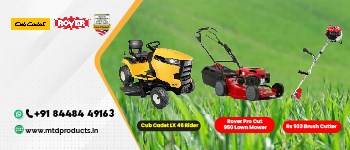
Aquaculture is expanding due to the rising demand for fish and fishery products. Aquarists have used several chemicals or plant extracts that boost or activate the immune system in order to shield fish against various diseases.
Chemotherapy is a commonly utilized medical procedure for both disease prevention and treatment, despite the fact that chemical medications have several detrimental impacts on both human health and the environment. Plant extracts have become a popular tool for treating diseases found in water products as an alternative to chemical therapies. In traditional folk medicine, a variety of plant species, including thyme, garlic, fenugreek, and nettle, are used to cure a variety of ailments, improve fish health, and boost aquaculture's efficiency and resilience to illness.
A perennial member of the Urticaceae family, nettle is a common plant. All parts of Nettle (stem, roots, leaves, blooms, and seeds) are utilized as herbal remedies. Polysaccharides, lignans, flavonoids, coumarins, terpenoids, phenol, and the lectin Urtica dioica agglutinin (UDA) are among the numerous biocomponents found in nettles. Research has shown that nettles also generally have anti-inflammatory, anti-allergic, antibacterial, antifungal, antiviral, and anticarcinogenic properties. Numerous research investigations have reported the beneficial benefits of nettle on the immune system and growth performance of laboratory animals.

We used four diets prepared by combining a weighted amount of different feed ingredients (like rice bran, mustard oil cake, and maize) with three different quantities of U. dioica leaves powder (0.5 g 0.75 g and 1.0 g/kg respectively, and the treatment control, consisted of the basal diet with 0% of the plant. The materials were uniformly mixed with an acceptable amount of water. A hand-operated pelletizer was used to pelletize the prepared dough separately. The pellets were well-dried in the sun and stored in airtight containers with proper labeling. The best result of growth parameters such as net weight gain, net length gain, weight gain percent, specific growth rate, gross conversion efficiency, feed conversion ratio, and condition factor were recorded in treatment T3 in comparison with the other treatments. No mortality was observed in all the treatments resulting in a 100% survival rate. The haematological parameters (like haemoglobin level, total erythrocyte count, total leukocyte count, etc.) and serum biochemical parameters (including total serum protein, albumin, and globulin) showed better results in treatment T3.
The study results concluded that the supplementation of U. dioica @ 1 g/kg in the feed of Cyprinus carpio haematopterus showed increased growth performance haematological and serum biochemical parameters. The study also revealed that there was no negative impact of herb-supplemented diets on fish health which resulted in no mortality.
The survival rate of fish was not affected after being fed with the Himalayan herb U. dioica to Amur carp (Cyprinus carpio haematopterus), all fish survived. It is necessary to create and produce efficient, secure, and non-polluting herbal compounds in order to boost and accelerate the aquaculture industry's growth. Affordable and producing top-notch outcomes are herbal medications.











